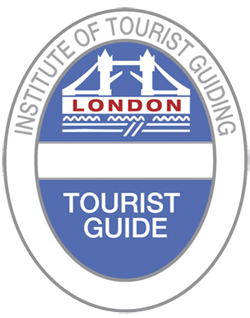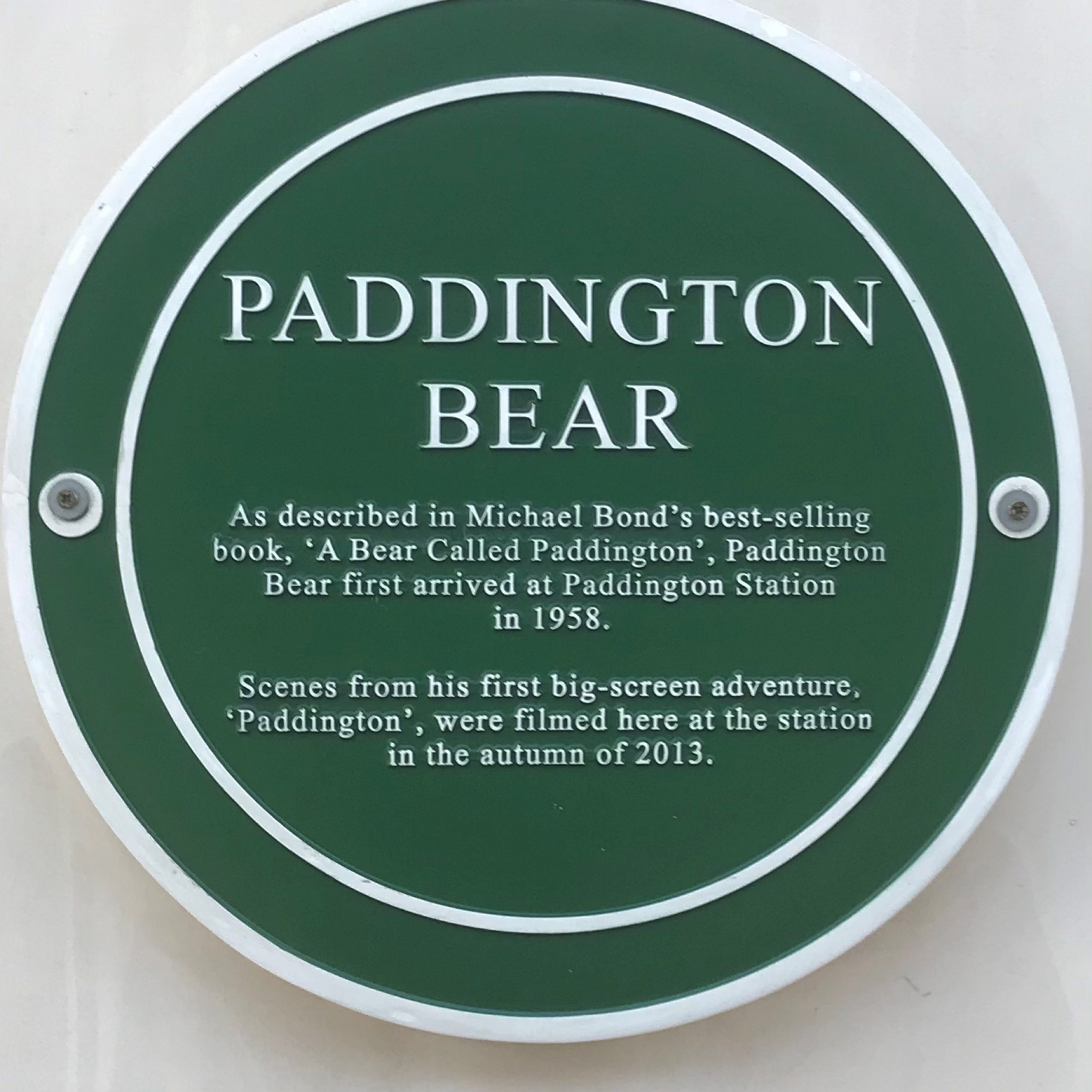
Although its difficult to give an exact number there are comfortably more than 500 named statues and 1000 plaques of various colour across Central London perhaps even double that if you include the whole of Greater London. These statues, memorials and plaques remember all sorts of public figures and I will feature many of them in future blogs but this week I am going to focus on some of those devoted to fictional characters.
Perhaps the obvious place to start is with one of the most beloved fictional residents of London and indeed one who is named after a London location – I am of course talking about Paddington Bear.
The lovable accident-prone bear created by Michael Bond first appeared in 1958 and has been delighting adults and children with his antics ever since with over 30 million books worldwide. Two feature films enhanced his popularity and in 2014 a Paddington trail of 50 statues went up around London to help promote the first of those. Two of those statues have been relocated to the Paddington basin but of course the station gave him his name and he is remembered there. A statue by Michael Cornish was unveiled by Michael Bond in 2000 but was moved from its original position near the retail outlets to a position on Platform 1 near where Paddington first meets the Brown family in the film. Currently due to renovation work, Paddington is sadly under a dust sheet but nearby can be seen a plaque and bench immortalising him.
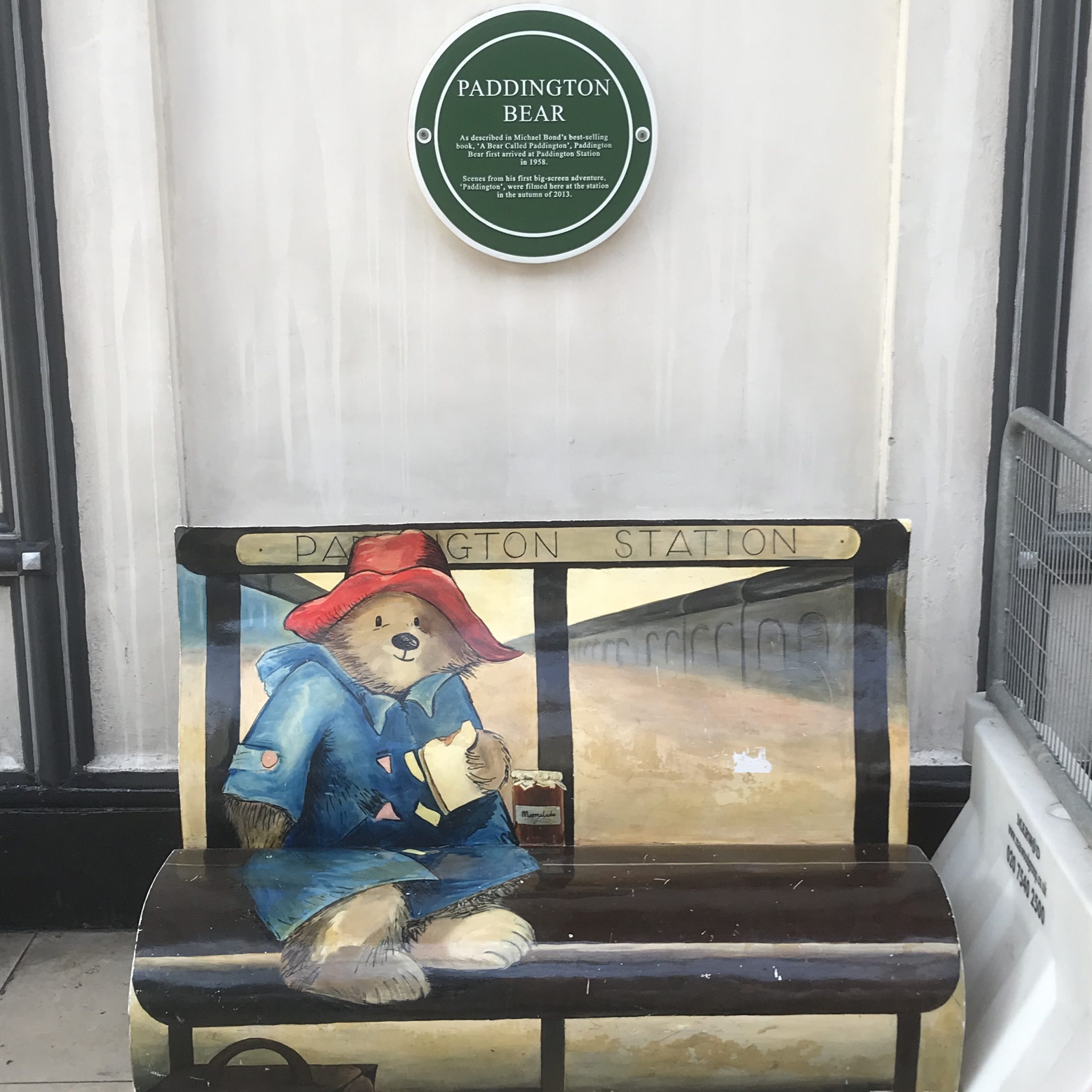
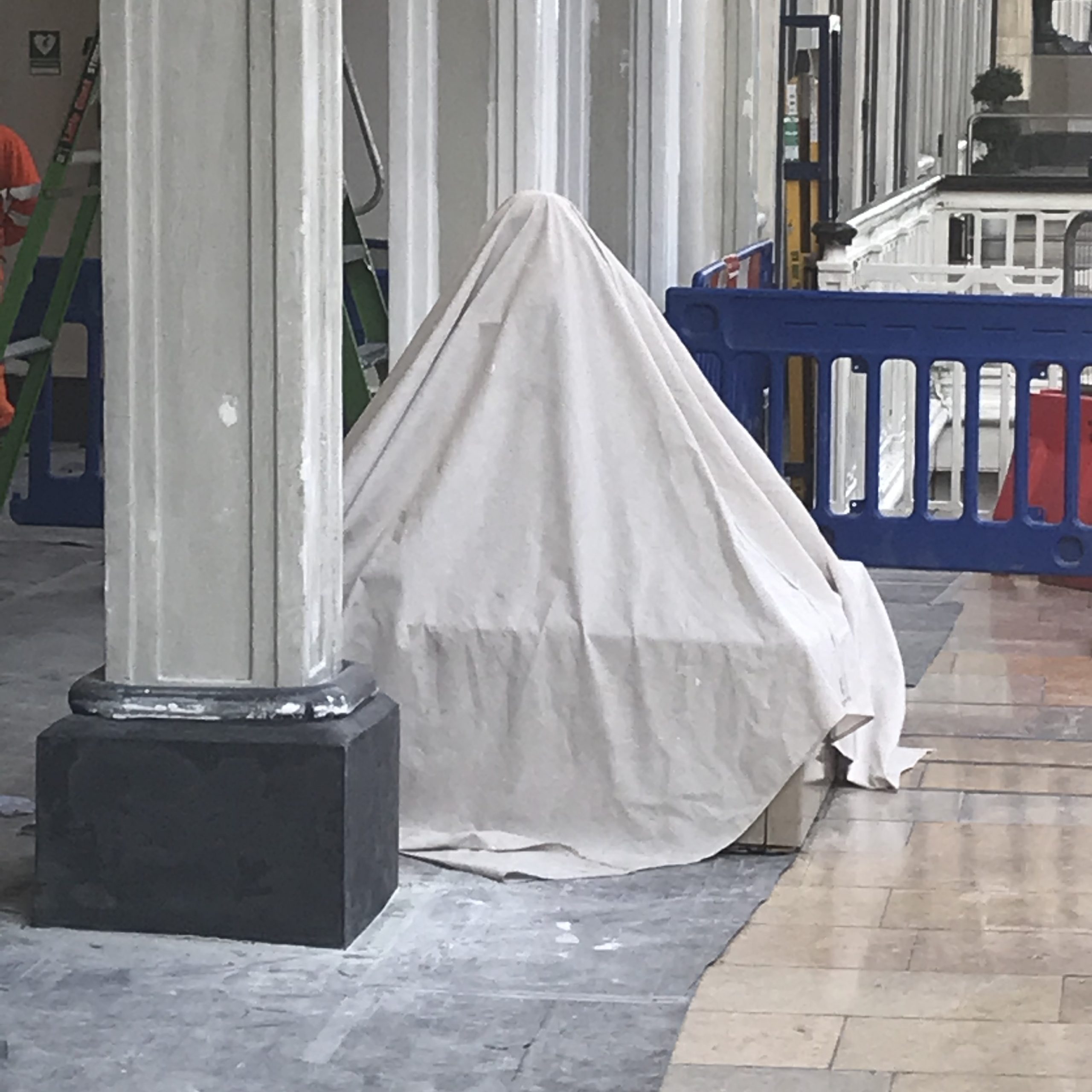
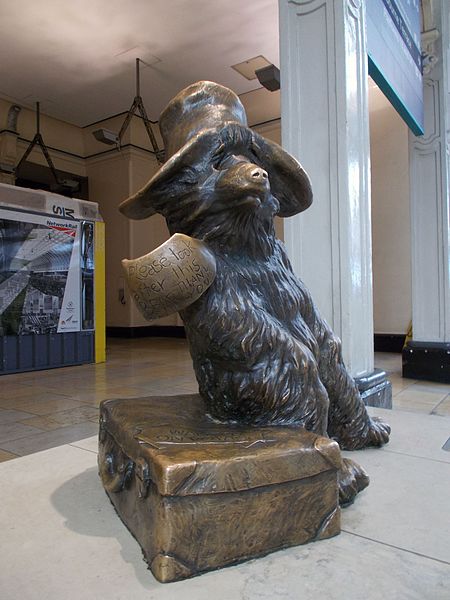
The picture of the Paddington statue on platform 1 appears courtesy of WikiCommons
There are two other statues to Paddington in London. One is a short distance from the station in St Marys Square. Here there are three two-dimensional steel statues of notable people associated with the area. Commissioned by the charity Sustrans as well as Alan Turing and Mary Seacole, there is one of Michael Bond and Paddington.
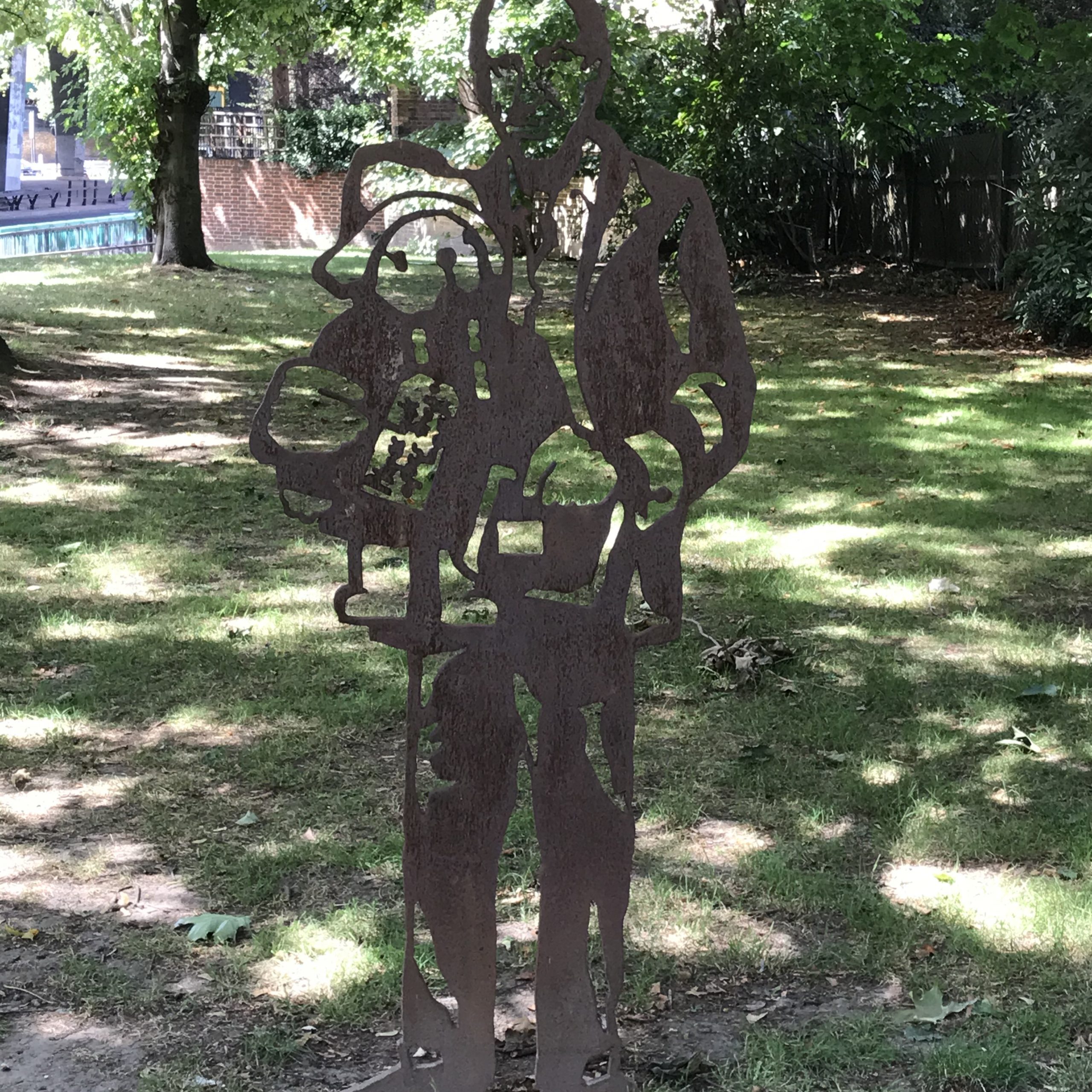
Michael Bond lived locally and when he sadly passed away in 2017, he was appropriately if coincidentally buried in Paddington Cemetery in Kilburn. His tombstone reads the same as the label around Paddington’s neck when the Brown’s first encountered him “Please look after this bear. Thank you”
Another statue of Paddington can be found in Leicester Square where he is among several fictional and real films stars in the Scenes of the Square programme.
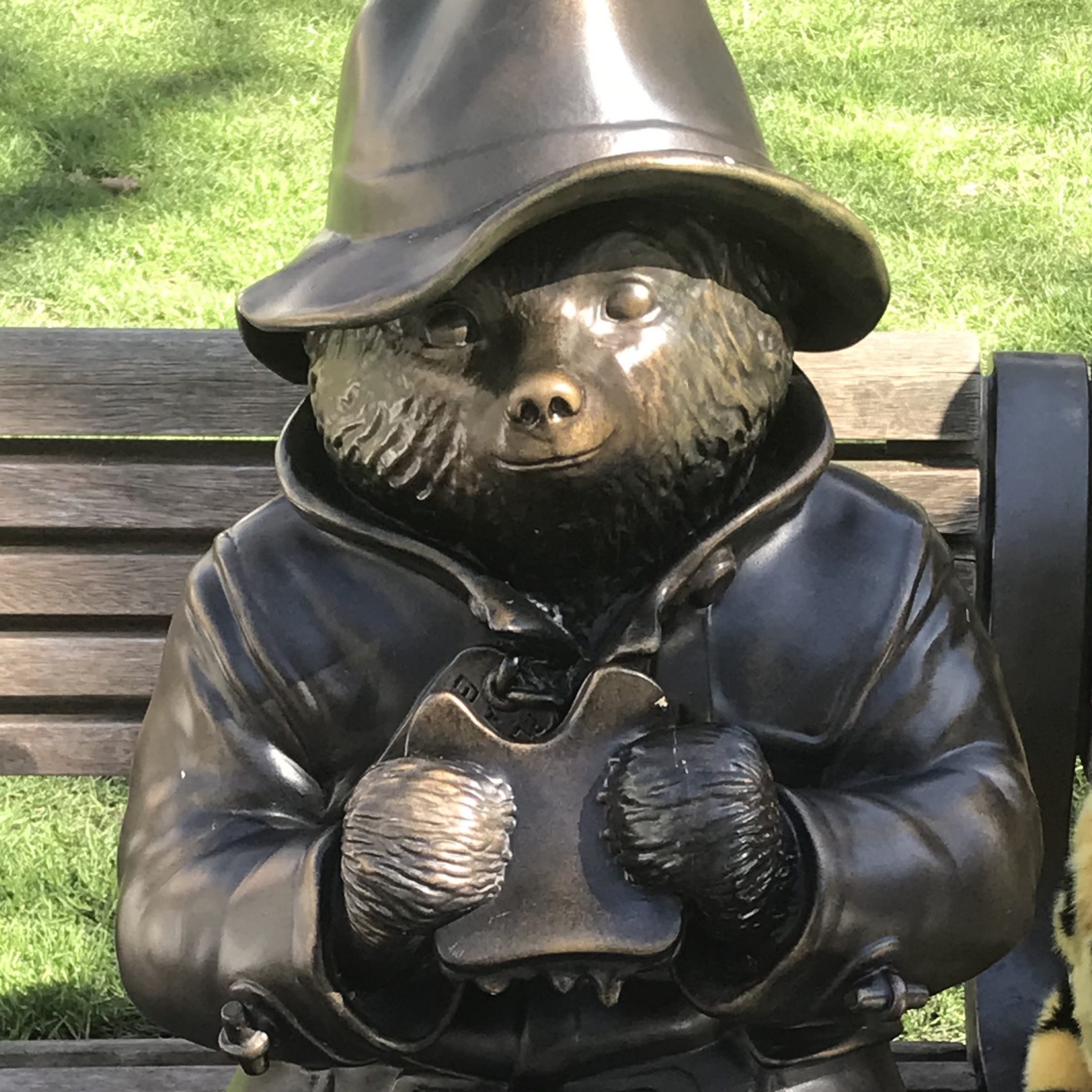
He is inevitably eating a marmalade sandwich while sitting on a bench but also in the square are Gene Kelly, Laurel and Hardy as well as Bugs Bunny (your author would have preferred Wile E Coyote!), Batman looking out from the top of the Odeon Cinema,
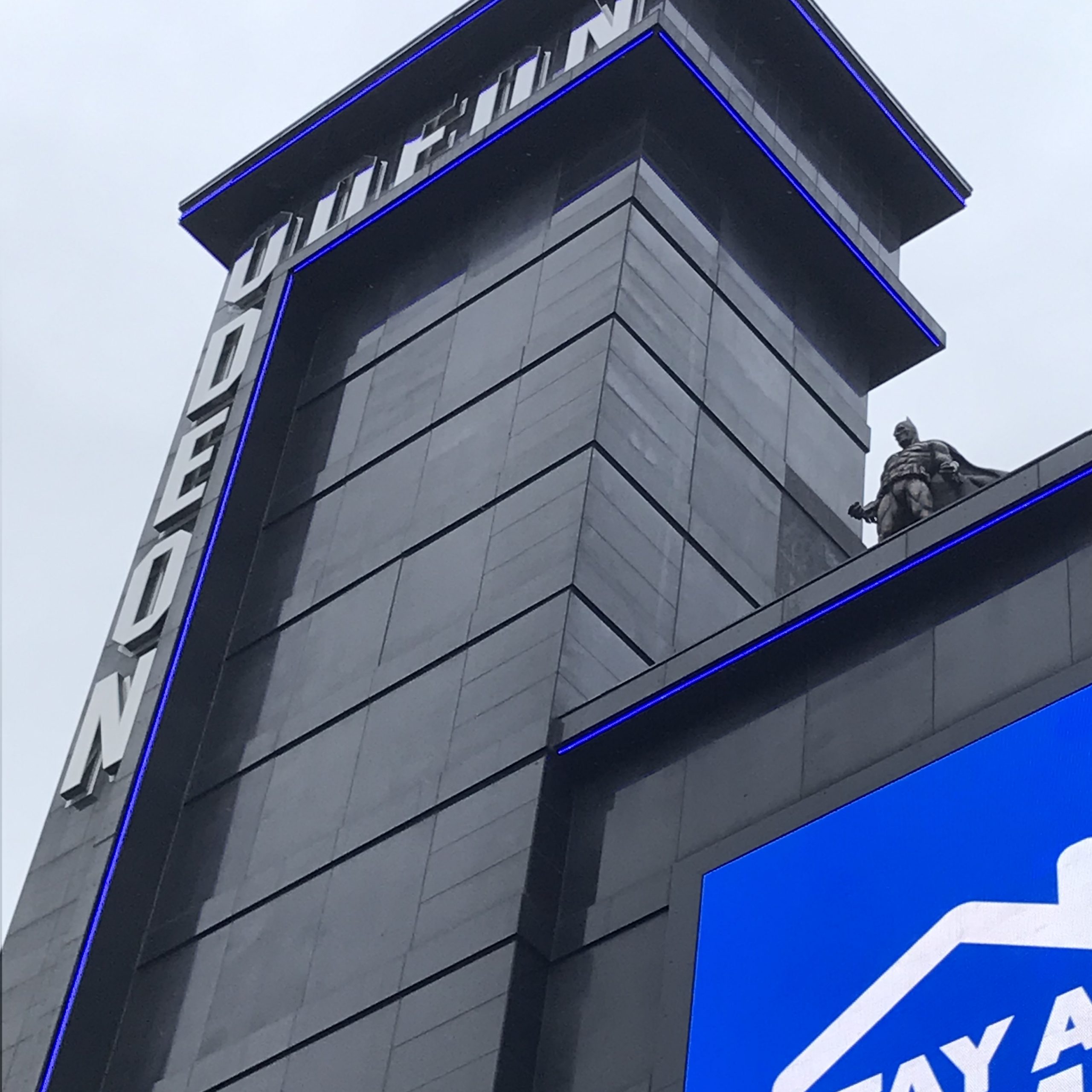
There are also statues of Mr Bean (everytime I went there people were sitting next to him) and Harry Potter. ( I couldn’t bring myself to take a photo of Kings Cross Station!)

There are also statues of Wonder Woman and Mary Poppins adding to the woeful number of named statues of females in London (a subject for a future blog)
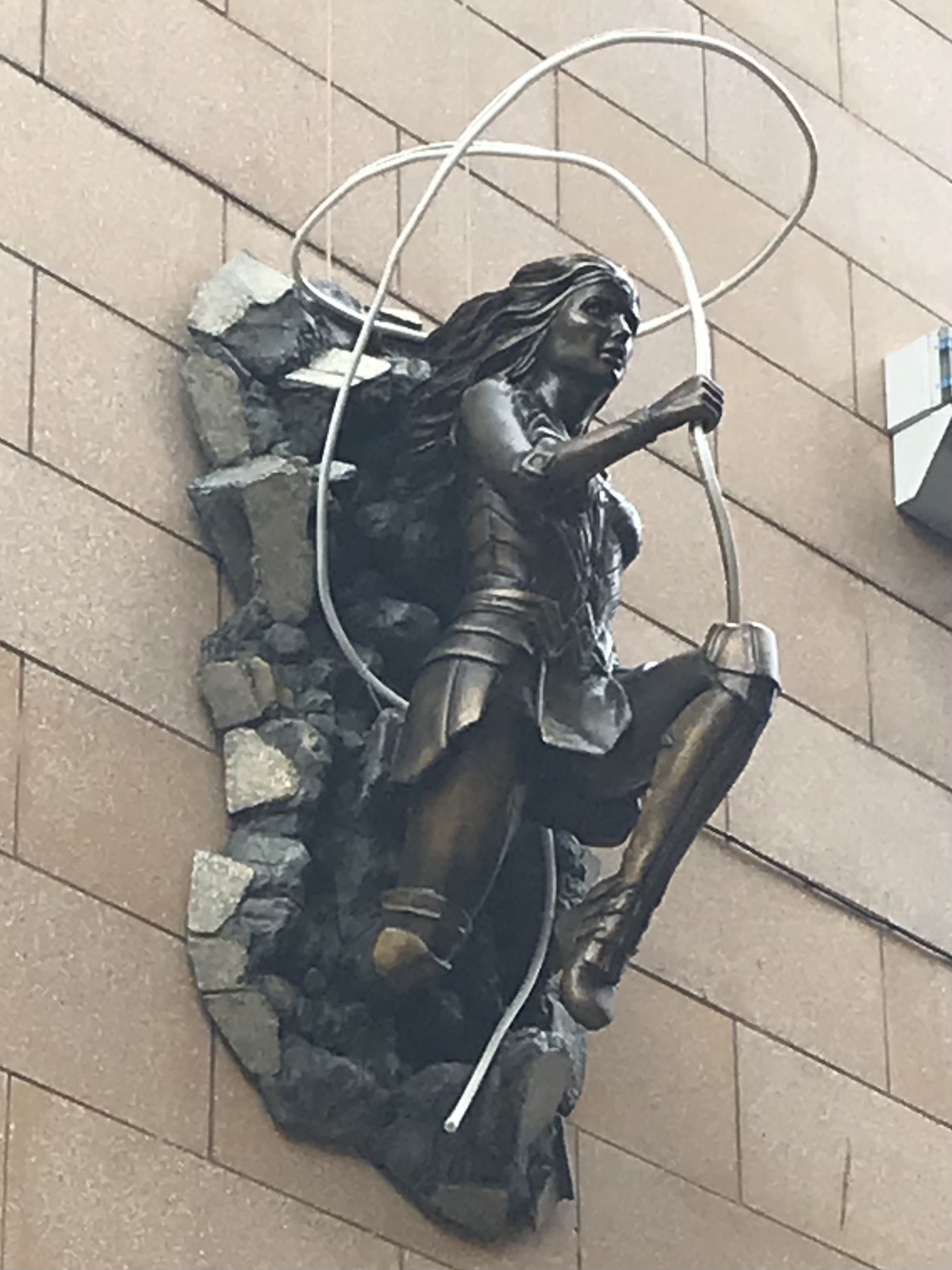
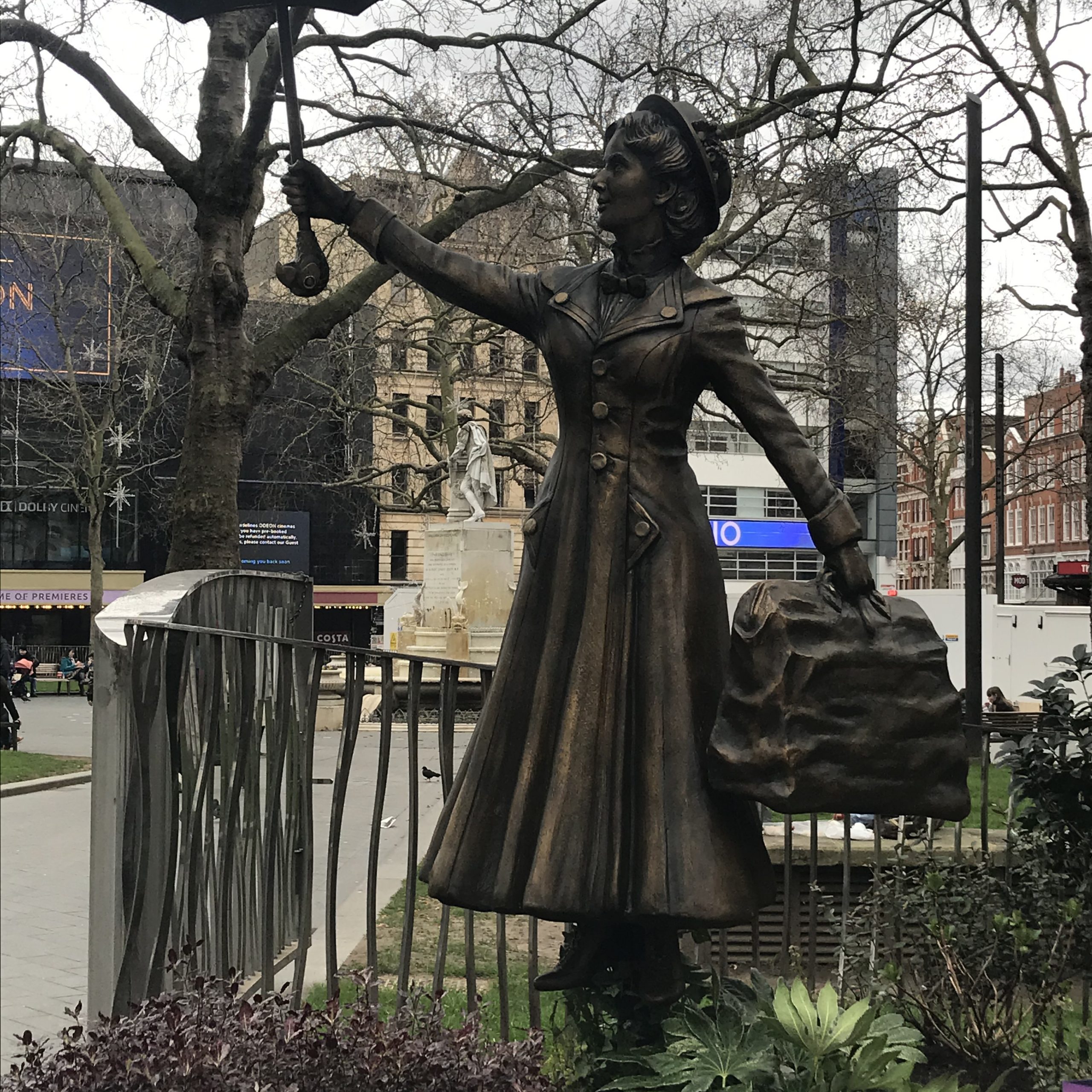
As we have seen, Paddington has a plaque at the station and there aren’t many plaques to fictional characters in London. There is one not far from Leicester Square in Heddon Street where the album cover photo for the David Bowie album The Rise and Fall of Ziggy Stardust and the Spiders from Mars was taken in 1972.
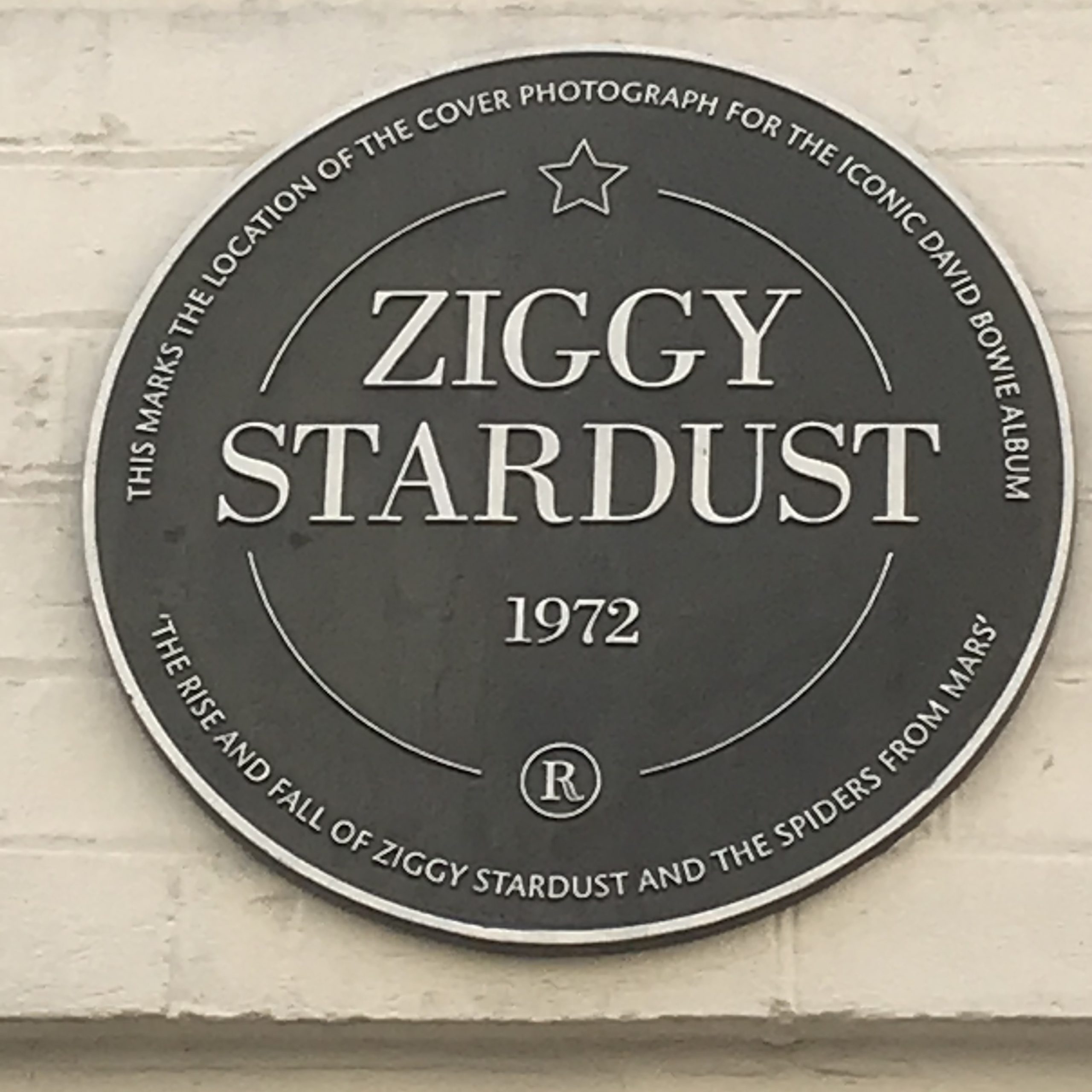
A brown plaque commissioned by the Crown Estate to ‘Ziggy Stardust’ was unveiled at the location in March 2012. The end of the tour accompanying the release of the album and effectively the ‘death’ of the Ziggy Stardust persona took place in 1973 at another London location the famous Hammersmith Odeon (now the Eventim Apollo).
Another plaque to a fictional character is at one of the most famous addresses in London literature – 221b Baker Street, the home of the great consulting detective Sherlock Holmes or is it?
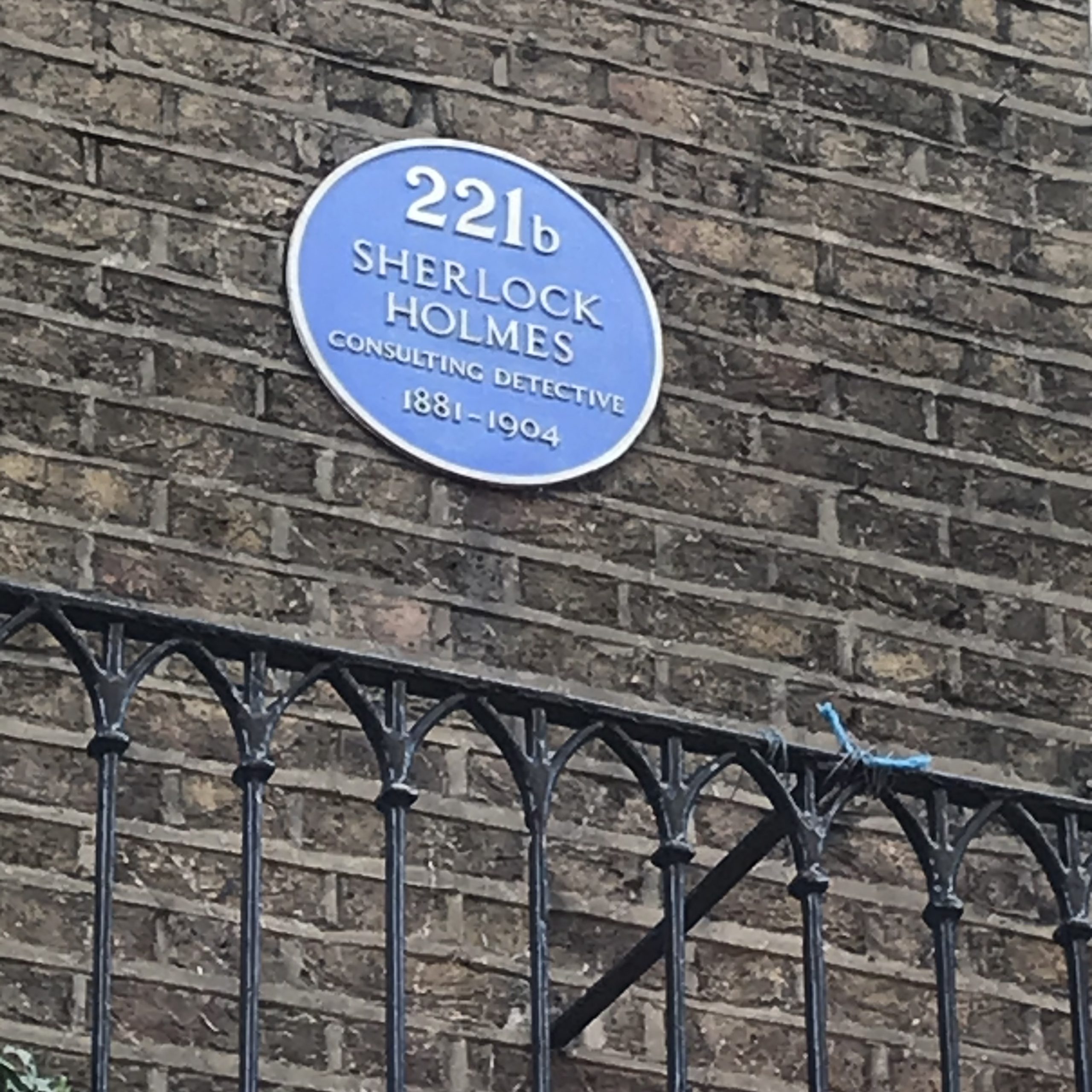
When Arthur Conan Doyle wrote the Sherlock Holmes stories in the late 19th century, Baker Street numbering did not go beyond the 100s. The road north of Marylebone Road was known as Upper Baker Street. Consolidation of the roads and renumbering took place in the 1930s and the numbers 219-229 Baker Street were allocated to Abbey House, premises owned by the Abbey National Building Society. Letters to Sherlock Holmes from all over the world addressed to Sherlock Holmes at 221b Baker Street were duly delivered to Abbey National. They even employed a full-time secretary to answer the mail stating that the detective had retired to keep bees in Sussex. Then in 1990 at a Georgian Townhouse at 239 Baker Street came the opening of the Sherlock Holmes Museum.
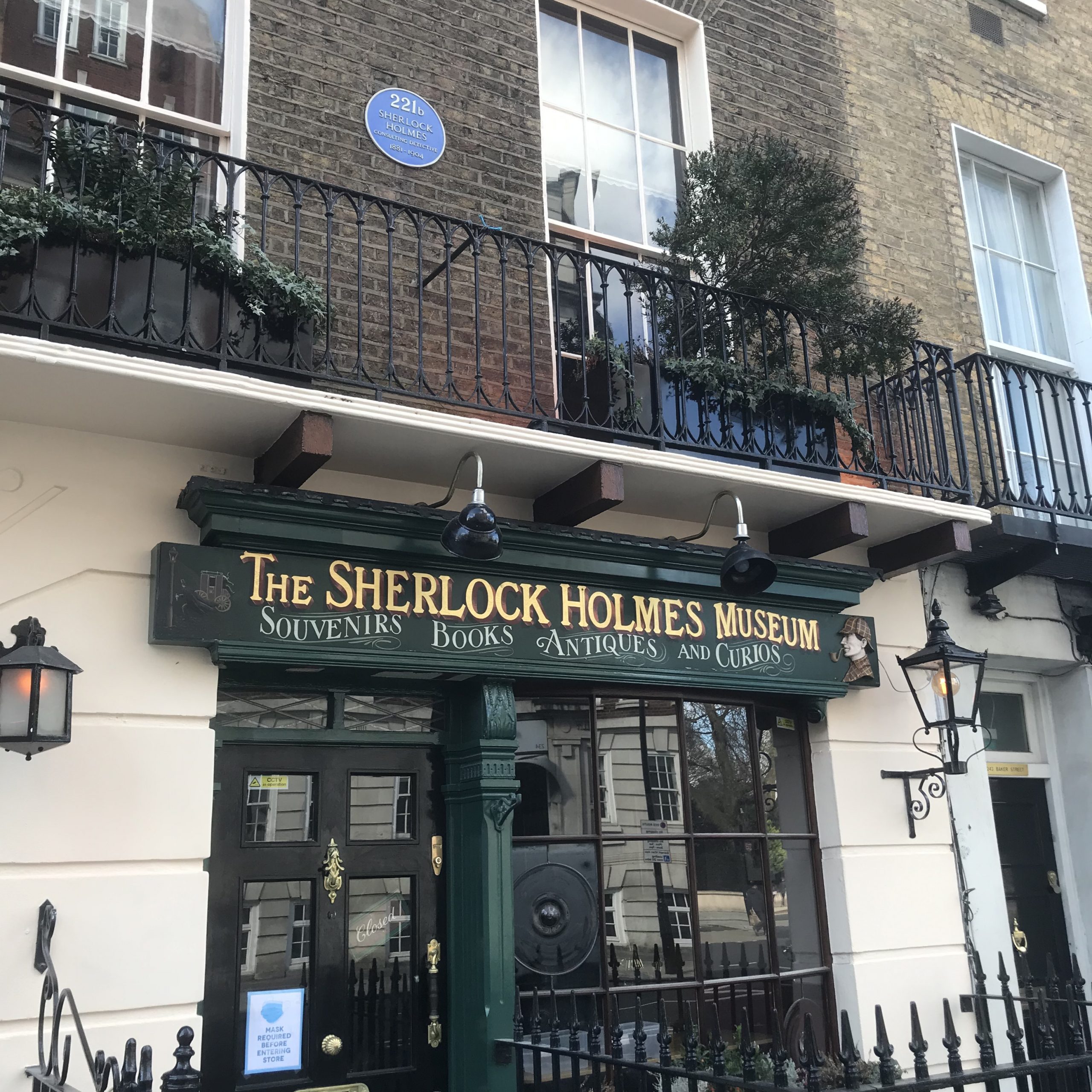
Devoted to the detective, inside it bears a resemblance to the layout of Holmes’ apartment as described in the stories. The museum argued that they should receive letters to the detective and got embroiled in a decade long debate with Abbey National that was not resolved until 2002 when the building society vacated Abbey House and the Royal Mail agreed to deliver 221b Baker Street addressed mail to the museum. The City of Westminster Council allowed the 221b plaque although the museum is still officially 237-241 Baker Street.
When Abbey National were at Abbey House, there was a plaque on Abbey House although that has now disappeared, but the building society did commission the statue of Sherlock Holmes that still stands in front of Baker Street Station.
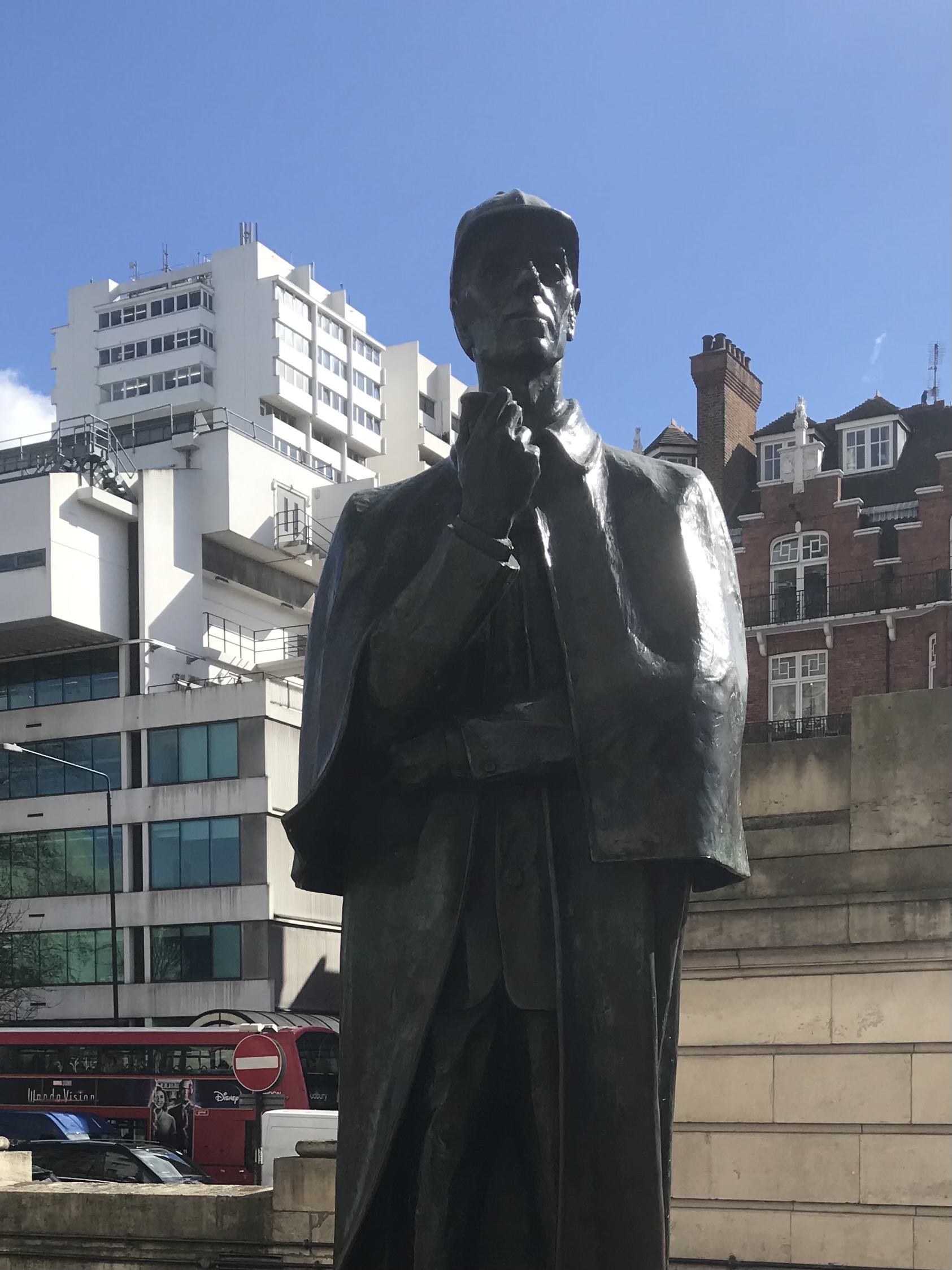
Sherlock Holmes also lends his name to a pub in Northumberland Avenue and our final fictional character maybe somewhat surprisingly also lent his name to a public house although not in London. The Peter Pan public house now demolished was in Peterborough but J.M Barrie’s ‘boy who never grew up’ is remembered in two sculptures in London. One at Great Ormond Street Hospital was unveiled in 2000 , the hospital receiving the copyrights on Barrie’s work since 1929. However, the more famous statue of Peter Pan is the one in Kensington Gardens commissioned by Barrie and sculptured in 1912 by Sir George Frampton. Barrie had the statue installed unannounced and without permission on 30 April 1912. He published a notice in The Times newspaper the following day: “There is a surprise in store for the children who go to Kensington Gardens to feed the ducks in the Serpentine this morning. Down by the little bay on the south-western side of the tail of the Serpentine they will find a May-day gift by Mr J.M. Barrie, a figure of Peter Pan blowing his pipe on the stump of a tree, with fairies and mice and squirrels all around. It is the work of Sir George Frampton, and the bronze figure of the boy who would never grow up is delightfully conceived.”
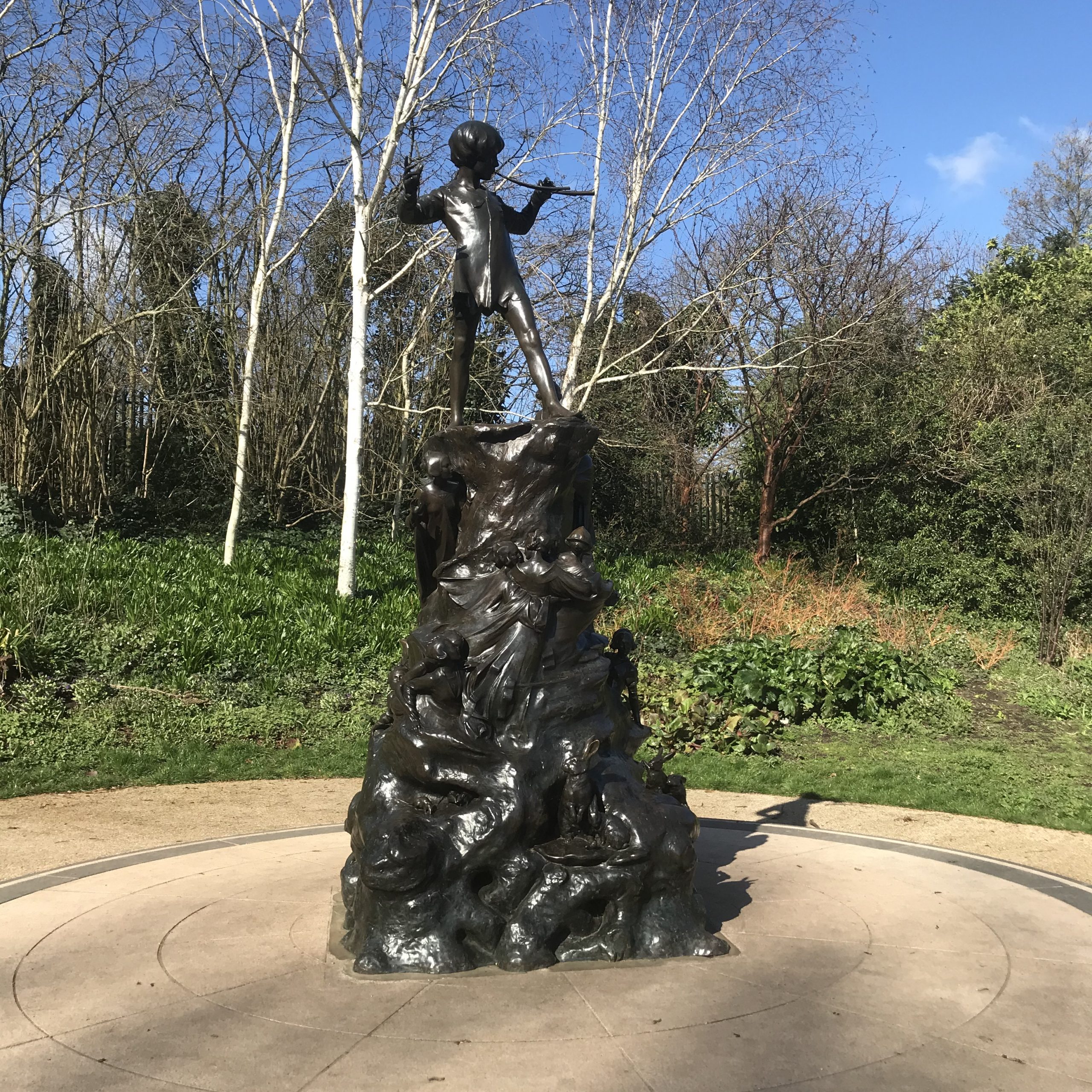
The plinth was replaced in 2019 while Frampton made six other casts of the statue that are located around the world in Brussels, Liverpool, Perth in Western Australia, Toronto, St Johns Newfoundland, and New Jersey. This statue has something of a personal history for me to as I recall back in the mid-1970s my mother unsuccessfully trying to find it. Of course, in those days the park did not have such good noticeboards and there was of course no internet. I vaguely recall that the statue’s pipe had been stolen and the story had featured on Blue Peter. I think that was what encouraged my mother to try and see the statue taking me and at least one of my sisters with her. She is a wonderful woman in many ways but not at times in her sense of direction and we never found it having walked seemingly miles from Hyde Park Corner – I think she was imagining John Noakes might be pointing the way!! I didn’t actually see the statue until summer of last year but on a happier note my mother did finally find it a few years ago.
Other fictional characters are remembered in London – in particular those of that master of London literature Charles Dickens and I hope to feature memorials to him and his characters in a later blog.
Thank you for reading.
best wishes.
Steve aka The Bridgeman
All photographs by the author unless otherwise stated. Copyright Steven Szymanski 2021
If you wish to know more information or want to be added to the blog mailing list then please contact me at stevenszymanskiguide@gmail.com.

